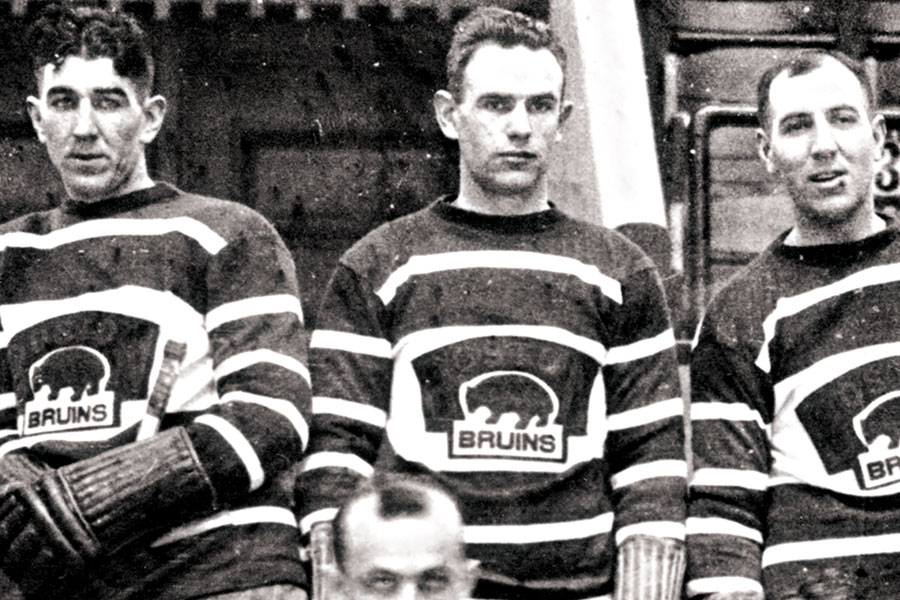
Ted Lindsay helped put union in place, but his wasn't the first attempt
Early attempt at a players’ union was scuppered in part by the Second World War.
 Ted Lindsay helped put union in place, but his wasn't the first attempt
Ted Lindsay helped put union in place, but his wasn't the first attemptTed Lindsay was eulogized, patronized and idolized as the driving force behind the first hockey players’ association in the 1960s. But a generation earlier, a group of players almost got a union off the ground, and likely would’ve succeeded if not for a more important issue in the way.
The first genuine hockey-unionizing attempt took place on March 12, 1941, in New York. The hockey-playing organizers included four members of the New York Rangers’ 1940 Cup-winning team – defenseman Art Coulter plus forwards Alex Shibicky and the Colville brothers, Neil and Mac. The Colvilles and Shibicky made a trio called the Great Depression-inspired ‘The Bread Line.’
A mystery man was orchestrating the association behind the scenes. He was a fringe but significant former NHLer. George (Gerry) Geran, a native of Holyoke, Mass., was to this original players’ association what Lindsay was more than a decade later. A Dartmouth product, Geran was the first American player to appear in an NHL game. He made his debut with the Montreal Wanderers in a game against Toronto in 1917.
Geran retired at 37 in 1933 but stayed involved in the game by monitoring the plight of retired players. Inspired by a group that had assisted baseball players who had fallen on hard times, Geran developed blueprints for a hockey union. He lived near Madison Square Garden and approached the Rangers before reaching out to the other NHL teams in 1941. “Geran called it ‘The Association of Professional Hockey Players of America,’ ” wrote historian Roger A. Godin, author of The Mysterious Gerry Geran.
Members of the 1940 Rangers supported Geran.Hall of Fame blueliner Coulter accepted the APHPA presidency. Other union officers included Shibicky as first vice-president, Mac Colville as second VP, Neil Colville as treasurer and Geran as secretary. With annual dues of only $10, many NHLers signed up.
In a letter to the players, Geran wrote, “The press and the public are wholeheartedly in sympathy with its success. Hospitalization throughout Canada and the United States is available. Group insurance is being investigated. League recognition and cooperation will be forthcoming as soon as the leagues realize the numerous advantages to the leagues themselves.”
Unlike today’s NHLPA, Geran’s group not only was designed for NHLers but players and referees in all pro leagues. The union was registered under the laws of New York State. The media covered the creation of the APHPA at the time. One of America’s leading sports columnists, John Kieran of the New YorkTimes, gave it an endorsement in the April 18, 1941, edition. “The feeling here,” Kieran wrote, “is the hockey players, officials and club owners should get together and put it over in style. To me, it doesn’t seem that there could be any argument about it.”
Geran sent a letter to NHL president Frank Calder on May 3, 1941, requesting a meeting with him and team ownership reps. Geran suggested ownership join a players-governors “advisory committee,” adding that Lester Patrick of the Rangers, Boston’s Art Ross and Chicago’s Bill Tobin be part of it. “They have been players,” Geran said, “and are now hockey executives and therefore understand players and their problems.”
However, neither Calder nor pivotal owners were receptive to the idea. Rangers president Colonel John Reed Kilpatrick gave it a thumbs down on the grounds his club took good care of its players. By contrast, New York Americans manager Red Dutton supported Geran along with other players and coaches including Detroit captain Ebbie Goodfellow. “The (union) proposal is fundamentally sound,” Kieran concluded, “and should be worked out for the benefit of all concerned.”
But it was the early 1940s, and there was a larger problem confronting players and owners. The Second World War was blazing in Europe with the Japanese bombing of Pearl Harbor just months away. Players were enlisting in the Canadian and American armed forces while owners worried about whether the NHL could even survive the war employing makeshift lineups.
It did survive, but Geran’s groundbreaking union idea did not, because his four chief officers shed Rangers uniforms for khaki. Coulter enlisted in the U.S. Coast Guard while the Colvilles and Shibicky wound up in the Canadian Army. By the time the war ended in September 1945, the union was a memory.
If not for the published work by Godin and a collection of letters and stories collected by this author, this early-era foray into unionization would likely be forgotten. So while Lindsay is being rightfully remembered as a fearless trailblazer for the players, it should also be noted that Geran and a handful of players and owners in the 1940s cut an early swath towards the creation of a players’ association.




